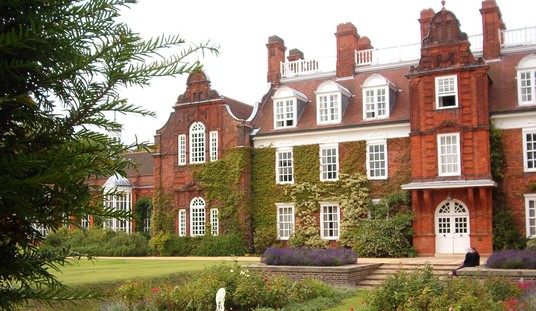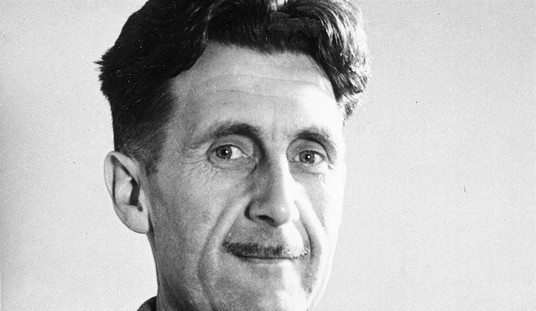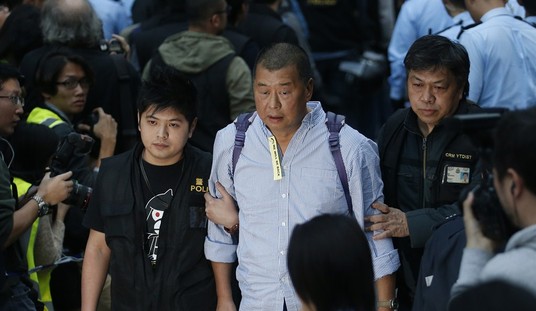Barack Obama has spent the past two years scolding Americans on our lack of progress on high-speed rail, using China as a yardstick — or more appropriately, a ruler with which to rap our knuckles. Almost exactly two years ago, Obama announced his intention to spend tens of billions of dollars in catching up to China and Europe in subsidizing the rail lines and systems for high-speed transport. “My high-speed rail proposal will lead to innovations that change the way we travel in America,” Obama said in April 2009, saying of China that it “may have more miles of high-speed rail service than any other country just five years from now.”
Or maybe not, as the Washington Post’s Charles Lane reports after his trip to see the project first-hand. The vaunted high-speed rail project pushed by Beijing has collapsed into a morass of embezzlement and failure (via Jonah Goldberg):
For the past eight years, Liu Zhijun was one of the most influential people in China. As minister of railways, Liu ran China’s $300 billion high-speed rail project. U.S., European and Japanese contractors jostled for a piece of the business while foreign journalists gushed over China’s latest high-tech marvel.
Today, Liu Zhijun is ruined, and his high-speed rail project is in trouble. On Feb. 25, he was fired for “severe violations of discipline” — code for embezzling tens of millions of dollars. Seems his ministry has run up $271 billion in debt — roughly five times the level that bankrupted General Motors. But ticket sales can’t cover debt service that will total $27.7 billion in 2011 alone. Safety concerns also are cropping up.
But hey, the trains still run on time, don’t they? Not exactly:
Faced with a financial and public relations disaster, China put the brakes on Liu’s program. On April 13, the government cut bullet-train speeds 30 mph to improve safety, energy efficiency and affordability. The Railway Ministry’s tangled finances are being audited. Construction plans, too, are being reviewed.
Liu’s legacy, in short, is a system that could drain China’s economic resources for years. So much for the grand project that Thomas Friedman of the New York Times likened to a “moon shot” and that President Obama held up as a model for the United States.
Even with substandard materials and shoddy construction, the system faces annual shortfalls of billions of dollars. Now the system runs a lot slower, although the price isn’t likely to decline, and bus service will look better and better to the working class the high-speed rail was supposed to serve. The pricing is why the train services mainly the wealthy and foreigners even with the massive subsidies for its operation.
For the record, the $271 billion sinkhole exceeds our government’s cost of taking over Fannie Mae and Freddie Mac, and we have an annual GDP around three times larger than China’s.
Lane explains in his lengthy, must-read article that failure is the norm and not the exception for high-speed rail systems. In Japan and Taiwan, high-speed rail systems needed government bailouts to keep operating. Our own experience with Amtrak should make that fairly clear; despite having to make minimal capital investments (as opposed to capital-intensive startups for railroads), Amtrak routinely runs deep in the red, and even that is deeply subsidized, as Ronald Utt reminded us last month at Heritage:
Ridership has also faltered. As Amtrak data reveal, FY 2008 was the high-water mark for ridership in recent years. Ridership fell in FY 2009 and returned only to 2008 levels in 2010, when it reached 28.7 million nationwide,[7] about 10 million fewer passengers than went through the Phoenix airport in 2009.[8] To achieve this incidental market share, Amtrak required a federal taxpayer subsidy of $4.4 billion over the three fiscal years in question. As a result, Amtrak receives the highest per-passenger federal subsidy of any mode: $237.53 per 1,000 passenger-miles compared to $4.23 per 1,000 passenger-miles for commercial aviation.[9]
None of us should be surprised at the failure of China’s high-speed rail, but we’d better all learn a lesson from it. Nineteenth-century transportation systems are not the answer for our transportation infrastructure, especially when air service is faster, cheaper, much more flexible, and self-supporting. We need to stop the federal government from attempting these social engineering projects and focus on spending reductions. If politicians like playing with trains, let them buy a Lionel set like all the other little boys and girls.







Join the conversation as a VIP Member